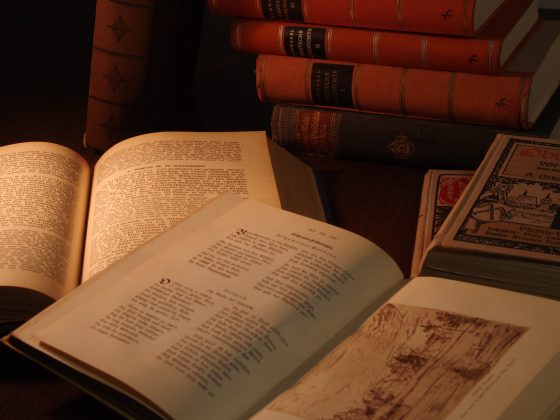There is a huge difference between buying art and collecting art. Buying art is rather an activity based on what you like, while collecting art is more of a purposeful directed long term commitment. In both cases, you buy according to your personal taste, but if your aim is to properly collect art, you have to pay attention to two additional elements. The first is being able to effectively research, evaluate and decide to buy what attracts you. The second is choosing different artworks to arrange a meaningful grouping in order to build a collection.
Necessary steps and common issues when you start creating an art collection
Good documentation enhances the value of art in both tangible and intangible ways, and the documents themselves can add extra value to it. It is wise to save all receipts, certificates of authenticity and other related materials when you acquire artwork, as well as getting descriptive written statements from galleries, artists of other collectors. It is also advisable to build an organised system: save and file books, catalogues, reviews, receipts and other materials which increase legitimacy of a specific piece of art as you can reap bigger dividends at a later stage. In fact, you can plan your strategy since the beginning of such process in order to create more gravity and add more value for future owners, might they be museums, institutions, family members or art buyers.
What we learn from all this is that collectors, no matter how large or small their collections, should provide a complete list of options and instructions for those who will inherit their art. These include names, addresses, phone numbers, procedures, currency values, and all other particulars for selling or donating as well as for dispersal within the family. There are many examples in which such aspects have been overlooked and when the owner of an art collection passed away, a large portion of value was lost.
Common issues for art law include how works of art should be valued, how to protect and acquire ownership of Intellectual Property Rights in art, free speech issues, authenticating and dealing with stolen artworks, cross-border transfer and a variety of business issues related to the art industry. Art valuation is particularly important for determining tax consequences of dealing in art and for testamentary purposes. It also has relevance to insurance claims disputes, and when using the art pieces for collateral when obtaining a loan. And, clearly, the consequences are extremely important also when one chooses to donate all or a portion of their art collection to a museum or other non-profit organisation.
Intellectual Property interests in art include protecting copyrights to various works and determining whether a piece was created independently or as a work for hire. A common question is whether a specific work has been illegally copied or not. Another issue is whether an artwork can be moved from its original installation or not. Free speech issues in art often relate to whether something is art or obscenity. Occasionally, issues about free speech may also relate to whether something is art or a violation of different laws and regulations.
How does Copyright work and is protected?
The general rule is that, for a work to be copyrightable, it must be original — even a “modicum of creativity” will be enough – and it must be fixed “in a tangible medium of expression”. This simply means that the work is an independently created work that is not a copy of something else and be expressed on some form of media, whether it be canvas, paper, phono-records, or even digital coding that can only be read by a machine.
The law lists eight categories of works that are protectable by copyright: literary works; musical works; dramatic works; pantomimes and choreographed works; pictorial, graphic and sculptural works; motion pictures and other audio-visual works; sound recordings; and architectural works.
A work is protected by copyright the moment the work is fixed in a tangible medium of expression – so a painting is protected the moment it’s painted, and a novel is protected the moment it’s written. In general, copyright is the right given to the owner of an original work. This right can subsist in literary works such as books and computer software, musical works such as musical compositions, dramatic works such as plays, artistic works such as drawings, paintings and sculptures, sound recordings, films, broadcasts, cable programmes and the typographical arrangement of published editions of literary, dramatic or musical works, as well as performers’ performances. Copyright works made available on the internet are also protected. In essence, the subsistence of copyright does not require the work to have a particular aesthetic value nor to be clever nor very creative. It exists even in an item as simple as a photograph taken by an ordinary person in daily life.
Copyright is an automatic right which lasts until 50 years after the creator of the work dies. Such right takes effect at the moment when the artwork is created. The law tries to strike the right balance between the owner’s rights and the access to information and ideas of society as a whole, protecting the expression and the results of artistic ideas, rather than the idea itself.
The situation in Hong Kong is regulated by the Copyright Ordinance (Cap. 528) which has come into effect in 1997 and has been reviewed and revised in different occasions. The ordinance protects several categories of literary, musical, artistic works including performances and broadcasts as well as works made public through the internet. Artists are able to work and publish anywhere in the world and still be guaranteed protection in the territory. Furthermore, such protection is enacted through several international conventions such as the Berne Convention, Universal Copyright Convention, the Phonograms Convention, the World Trade Organisation’s Agreement on Trade Related Aspects of Intellectual Property Rights, the World Intellectual Property Organisation Copyright Treaty and the World Intellectual Property Organisation Performances and Phonograms Treaty, despite the fact that there are different rules and procedures linked to such conventions and often to different countries specificities.
Legal action in case of copyright infringement
Rights to copy works and distribute it are linked to the copyright owner, who in case of infringement can take legal action through civil litigation and/ or provisions for criminal enforcement of copyright. Relief against breaches of copyright law include damage and cost recovery when a substantial part of the protected work is taken. Exceptions exist and might be considered, especially when they pertain to private study and research, news reporting, use within educational facilities or public administration.
As there is no formal registration of copyright in Hong Kong, infringement actions often include a dispute about which party originally created the work in question and consequently which work or part of it is being copied. Conflicting evidence about the date of first creation is common and such evidence is often challenged. It is thus essential to be able to provide reliable evidence to verify the date of creation. In many cases copyright registrations in other countries can be a practical evidence.
Mediation and arbitration are also valuable options for the resolution of Intellectual Property disputes, although they generally require both parties’ consent. Arbitration and mediation are especially advisable when the situation involves parties who have an existing relationship and for those who prefer not to disclose sensitive or confidential information in open Court. Intellectual property rights are defined widely to include registered and unregistered rights and rights registered or existing inside or outside the territory and debates often comprise a dispute over the subsistence, scope, validity, ownership, infringement or any other aspect of an intellectual property right.
Our team at Hugill & Ip has extensive experience in dealing with Art Law, Intellectual Property Rights and Dispute Resolution issues – so kindly get in touch with us to find out how we can help.
This article is for information purposes only. Its contents do not constitute legal advice and readers should not regard this article as a substitute for detailed advice in individual instances.




